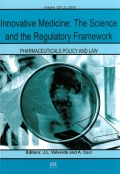Authors: Wilsdon, Tim | Haderi, Artes | Li, Lilian
Article Type:
Research Article
Abstract:
A healthy life sciences eco-system^1 is an environment where all stakeholders, patients, researchers, governments, the civil society and manufacturers, work together to support the sustainable development and provision of innovative solutions that address unmet health needs. To build a stronger eco-system, governments could prioritise policy initiatives such as: facilitating the commercialisation of academic research; encouraging clinical research; accelerating the adoption and diffusion of new innovative medicines; and promoting the local market as a place to invest and deliver life sciences innovation [1]. Historically, the development of medicines has been primarily undertaken in, and for the benefit of, high income
…countries. Over the last 20 years, this has started to change, partly as a result of the market opportunity increasing in middle-income countries (MICs) and low-income countries (LICs) and partly because governments in these countries have recognised the importance of encouraging innovative industries, resulting in a greater priority given to addressing diseases highly prevalent in MICs and LICs. In this article, we draw on our experience to develop lessons on how to establish a sustainable life sciences eco-system in MICs and LICs. We highlight the importance of different types of government policy (industrial policy, the regulatory framework, intellectual property, and improving access to medicines) and how success requires different stakeholders (public and private, international and national) to work together.
Show more
Keywords: Policy, lessons, life science, eco-system, sustain, Africa, China, India, Brazil, pharmaceuticals, medicines, LICs, MICs
DOI: 10.3233/PPL-160428
Citation: Pharmaceuticals Policy and Law,
vol. 18, no. 1-4, pp. 5-17, 2016
Price: EUR 27.50





